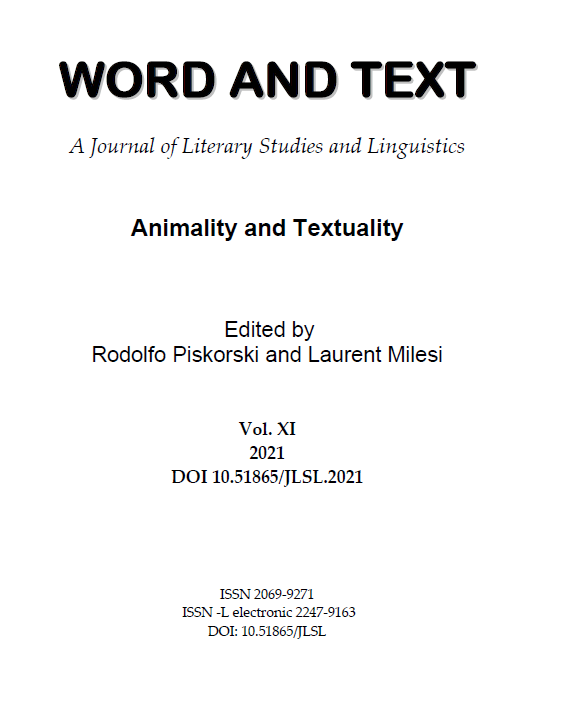Zo(o)graphies: Darwinian ‘Evolutions’ of a Fictional Bestiary
Zo(o)graphies: Darwinian ‘Evolutions’ of a Fictional Bestiary
Author(s): Laurent MilesiSubject(s): Poetry, Fiction, Ethics / Practical Philosophy, Aesthetics, Political Philosophy, Comparative Study of Literature, French Literature, Other Language Literature, Contemporary Philosophy, Structuralism and Post-Structuralism, Cultural Anthropology / Ethnology, Psychoanalysis, Phenomenology, Hermeneutics, Theory of Literature, Ontology, Rhetoric, British Literature, American Literature
Published by: Universitatea Petrol-Gaze din Ploieşti
Keywords: zo(o)graphy; bestiary; monster/master; mimesis/mimicry; evolution/involution; Darwinism; Julian Barnes; Gustave Flaubert; Timothy Findley; Robert Kroetsch; John Fowles; Jacques Derrida;
Summary/Abstract: The essay puts to the test Darwinian evolutionist theories, especially the key concepts of adaptation, natural selection and survival of the fittest, in the reading of several plots and fictions (some of them Ark-related animal fictions) concerned with evolution, trauma, adaptability, mimicry/mimesis and survival: Julian Barnes’s Flaubert Parrot and A History of the World in 10½ Chapters, Timothy Findley’s Not Wanted on the Voyage, Robert Kroetsch’s The Studhorse Man and John Fowles’s The French Lieutenant’s Woman. Weaving its critical argument with reference to several of Derrida’s reflections – on the impossibility of a pure origin, the proximity between commencement and commandment, the logic of obsequence, or relation between being and following (je suis), applied deconstructively to the traditional hierarchy between the human and the animal, mastery and monstrosity, and logos and bêtise, etc. – ‘Zo(o)graphies’ is structured in a series of interlinked tableaux, bestiaries as well as insets (Thomas Pynchon’s Gravity’s Rainbow, Jacques Derrida’s Glas). Following from the opening evocation of Peter Greenaway’s Vermeer-themed film A Zed & Two Noughts, which introduces the joint semantics of zographein: to paint from life, and zoon: animal, discreetly at work throughout, this study will eventually attempt to recast the problematic of the evolution of literature and literary forms as involution and regression.
Journal: Word and Text, A Journal of Literary Studies and Linguistics
- Issue Year: XI/2021
- Issue No: 1
- Page Range: 15-41
- Page Count: 27
- Language: English

